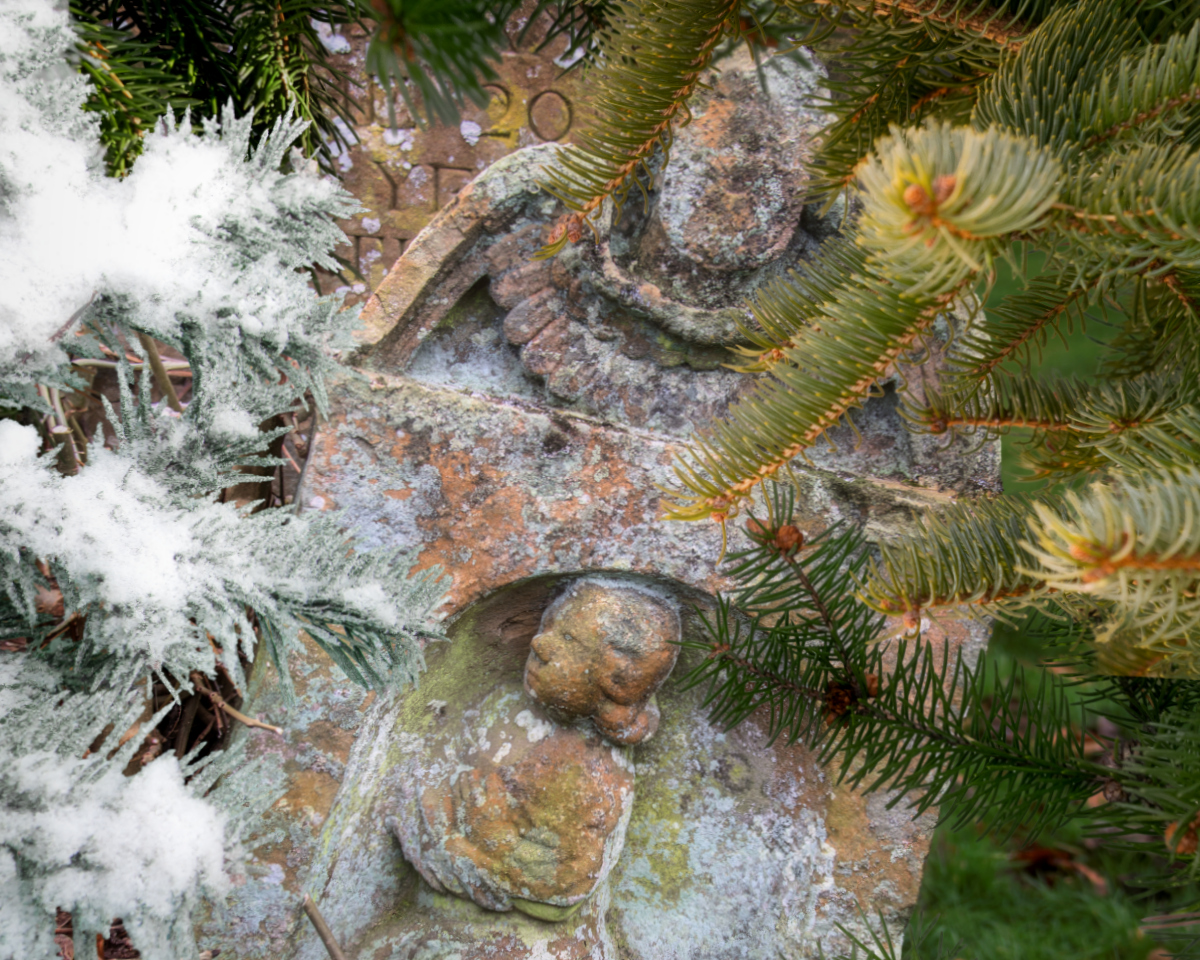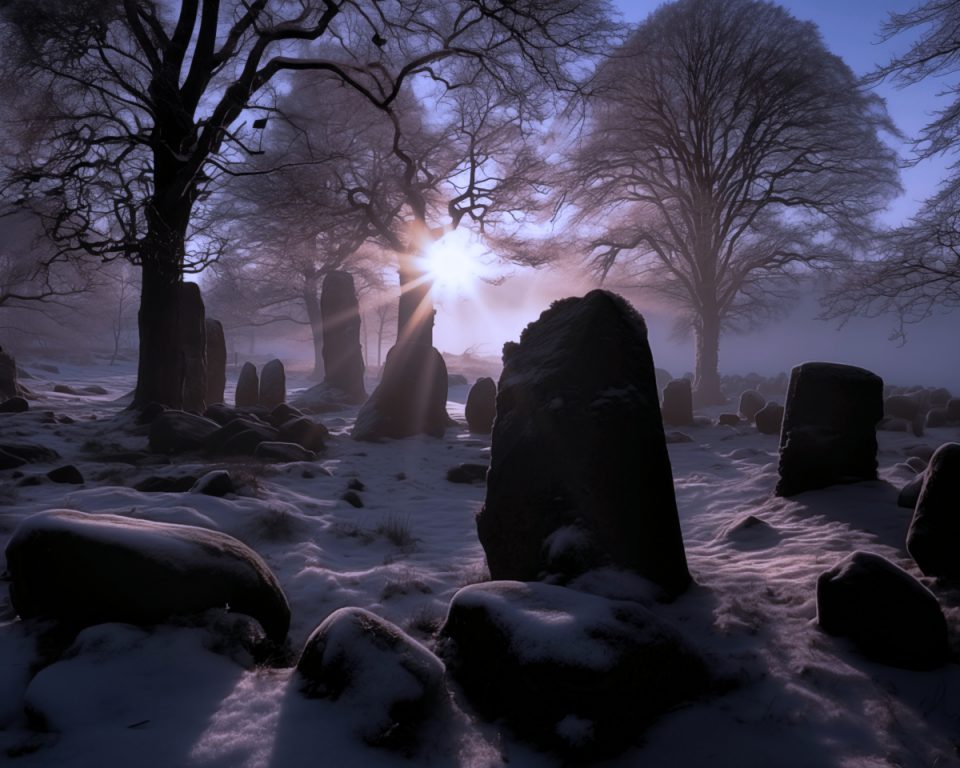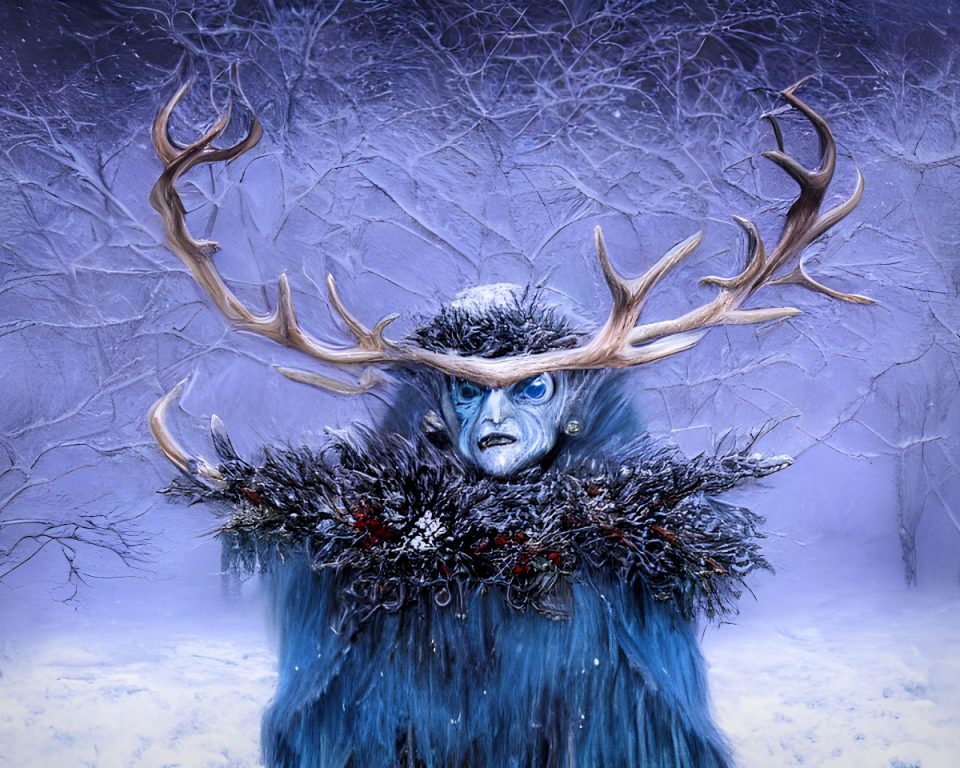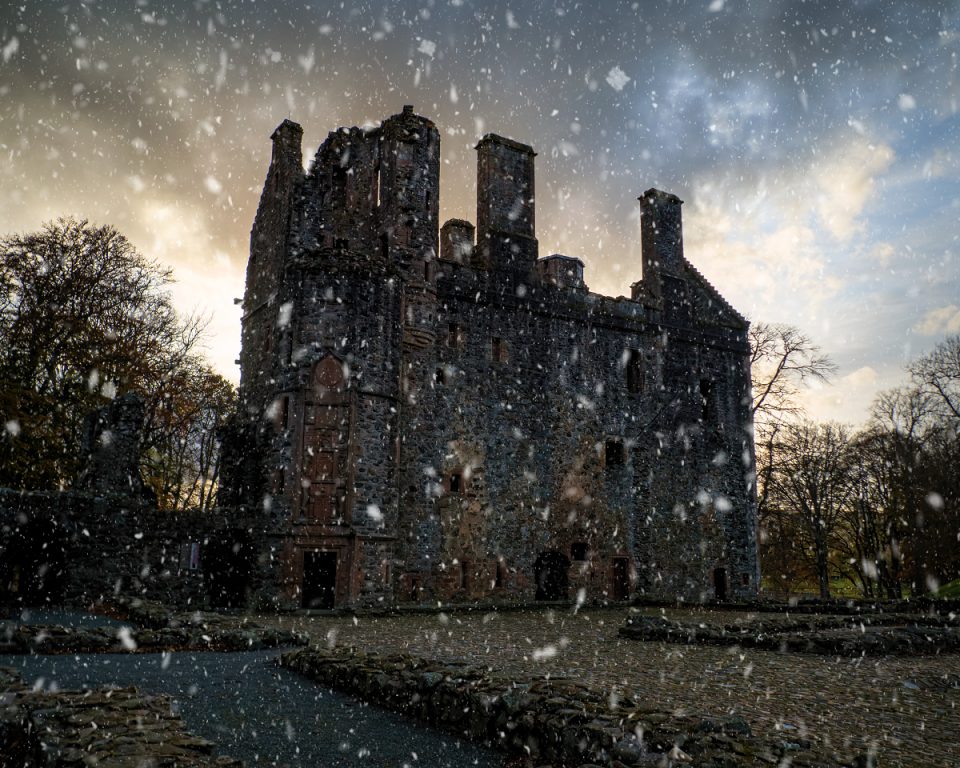Dismantling the Yuletide greenery was an important event on Uphalieday, Twelfth Night or what is known as Epiphany in the Christian calendar.
Decking the halls with Yuletide Greenery at Christmastime is an ancient tradition. Its origins stretch back to a time before Christianity reached Scotland’s shores. It stretches back to a time of druids and worship of the Mother goddesses such as the Cailleach and Bride. Trees were sacred to the ancient ones, so much so that the ancient Ogham letters were named primarily after trees. Ogham is a form of symbol writing which appears in Ireland around 400 AD. Later it was found on some Pictish stones.
Evergreen boughs were cut and brought indoors to symbolize life, rebirth and renewal. The ancient peoples believed that the Yuletide greenery had power over death because their green never faded. Thus, evergreens were used to defeat winter demons and hold back death and destruction. The Yuletide greenery was also believed to encourage the Sun’s return because of their strength and tenacity.
Yule Log
The Druids started the tradition of the Yule log. They believed the sun stood still for twelve days in the middle of winter. During this time, a log was lit from the remains of last year’s fire. It was thought to conquer the darkness, banish evil spirits, and bring luck for the coming year. Traditionally an oak log was used in Scotland whereas an ash log was used in England.
In an old Highland tradition, the Yule log was associated with the Cailleach. While everyone completed their morning chores, the head of the house would slip into the woods on Yule E’en. He would proceed to chop down a withered tree. He would then cut this into the rude shape of a woman. The whole household would get involved in dragging the ‘Cailleach’ back home.
The log would then be placed on a peat fire and allowed to burn over Yuletide.
Large scale Yule fires remained a common way to mark the season over the centuries in Scotland, particularly in northern harbour towns. Remnants of this can be seen today in the New Year Fire Festivals in Burghead and Stonehaven.
Yuletide Greenery: Mistletoe
Perhaps of all the Yuletide greenery, Mistletoe has the most obvious pagan origin. It was venerated throughout Europe and undoubtedly kissing under the mistletoe is derived from a pagan fertility rite.
Perhaps the single most important insight into the pagan associations of Mistletoe is found in the writings of Pliny the Elder (AD 23-79), a Roman naturalist and philosopher who described some curious ceremonies that took place in the Gallic provinces:
“The Druids—that is what they call their magicians—hold nothing more sacred than mistletoe and a tree on which it is growing, provided it is a hard-oak… when it is discovered it is gathered with great ceremony, and particularly on the sixth day of the moon…because it is then rising in strength and not one half of its full size. Hailing the moon in a native word that means ‘healing all things’, they prepare a ritual sacrifice and banquet beneath a tree and bring up two white bulls, whose horns are bound for the first time on this occasion. A priest arrayed in white vestments climbs the tree and with a golden sickle cuts down the mistletoe, which is caught in a white cloak.
Then finally they kill the victims, praying to God to render his gift propitious to those on whom he has bestowed it. They believe that mistletoe given in drink will impart fertility to any animal that is barren, and that it is an antidote for all poisons.” (Pliny, ‘Natural History‘)
The Magical Properties of Mistletoe
Mistletoe is a hemiparasite. It draws certain nutrients from its host plant. However, it does produce its own energy supply through photosynthesis. The fact that mistletoe does not grow in soil but on a host tree was enough to imbue mistletoe with mystical powers. This was coupled by the eerie appearance the opalescent berries take on in the moonlight which makes them appear to glow.
Interestingly mistletoe only rarely grows on oak, one of the great sacred trees of the old religion.
Mistletoe in Scotland
Mistletoe, although not common, is present in Scotland. According to F Marian McNeill:
“The Gaelic Name for mistletoe, nuadhulig, signifies All-heal. The plant was held to be a charm against poison and witchcraft, and to have the power of rendering cattle prolific. Well into the nineteenth century, Moray farmers cut withes of mistletoe at the full moon in March, bound them in circles and affected a cure with them throughout the year.”
Mistletoe and the Hay Family
James George Frazer in the Golden Bough wrote about how the Hays of Errol had adopted the mistletoe as their clan badge. He explained:
“There was formerly in the neighbourhood of Errol, and not far from the Falcon stone, a vast oak of an unknown age, and upon which grew a profusion of the plant: many charms and legends were considered to be connected with the tree, and the duration of the family of Hay was said to be united with its existence. It was believed that a sprig of the mistletoe cut by a Hay on Allhallowmas eve, with a new dirk, and after surrounding the tree three times sunwise, and pronouncing a certain spell, was a sure charm against all glamour or witchery, and an infallible guard in the day of battle. A spray gathered in the same manner was placed in the cradle of infants, and thought to defend them from being changed for elfbairns by the fairies.
Finally, it was affirmed, that when the root of the oak had perished, ‘the grass should grow in the hearth of Errol, and a raven should sit in the falcon’s nest.’ The two most unlucky deeds which could be done by one of the name of Hay was, to kill a white falcon, and to cut down a limb from the oak of Errol. When the old tree was destroyed I could never learn. The estate has been sold out of the family of Hay, and of course it is said that the fatal oak was cut down a short time before.” The old superstition is recorded in verses which are traditionally ascribed to Thomas the Rhymer:
While the mistletoe bats on Errol’s aik,
And that aik stands fast,
The Hays shall flourish, and their good grey hawk
Shall nocht flinch before the blast.
But when the root of the aik decays,
And the mistletoe dwines on its withered breast,
The grass shall grow on Errol’s hearthstane,
And the corbie roup in the falcon’s nest.”
Yuletide Greenery: Holly
According to Christian tradition, the prickly leaves of holly represent the crown of thorns that Jesus wore when he was crucified. The berries are the drops of blood that were shed by Jesus because of the thorns. This was another case of blending Christian belief with the rituals of the old religion. Perhaps once of the most obvious examples of this was the converting of the pagan Goddess Brìde to Saint Brigit.
Long before the advent of Christianity, holly branches had been brought into homes during the dark days of winter, to ward off evil spirits. In Celtic mythology, the holly was associated with the winter solstice. The belief was that the Holly King, a giant covered in holly branches ruled during the six months from midsummer to midwinter, before yielding his power to the Oak King. This is similar to the cyclical control the Cailleach and Brìde were said to have over the passing seasons.
Holly was considered to be a masculine plant, while ivy was considered to be a feminine plant – hence the old Yuletide carol, ‘The Holly and the Ivy’.
Cutting down a holly tree was considered to be bad luck. However, cutting boughs for decoration was permitted. Hollies were often left untouched in hedgerows. It was thought that the prickly bushes would also stop witches in their tracks for it was believed that they ran along the tops of hedges.
Yuletide Greenery: Ivy
Ivy needs to cling to something to support itself. This, in the Christian view, symbolises the need for people to cling to God for support in their lives. However, ivy also played a role in the pagan Yuletide greenery. Originally ivy was dedicated to Osiris the goddess of motherhood in Egypt, and then later to Dionysus or Bacchus the Greek and Roman Gods of wine.
In Greek mythology, ivy was said to grow around the altar of Hymenaios, the Greek God of Marriage. Thus, ivy was often presented to the bride and groom as a symbol of everlasting life, devotion, fidelity and loyalty. The Greeks also used it to make a crown for Liber the God of fertility. These ancient meanings were later adopted by the Christian faith when it became a symbol of friendship, love, immortality and death. It is often carved on Christian headstones. In bygone days it was placed on the graves of the dead on All Soul’s Day. It is the plant badge of the Clan Gordon which dates back to 1150
Wreaths
On the surface, wreaths are a relative newcomer to the range of Yuletide greenery and decorations. Surprisingly, it appears to have been introduced by Lutheran Protestants in the 16th Century. They used the circle to represent the eternal nature of Jesus Christ. Here it formed the role as a kind of Advent calendar for originally the wreaths had candles marking each week leading up to Christmas Day.
However, the materials which make the Christmas wreath show that it was of pagan origin. Indeed the circle itself was representative of the wheel of the year. In ancient times hanging a wreath was used as protection against evil.
Twelfth Night: The Yuletide Greenery Must Go!
As part of the Twelfth Night celebrations, the revellers had to take down all the Yuletide Greenery. This had to be burned for it was said to be bad luck if any greenery was left in situ. An old rhyme went:
Mistletoe, Holly and Evergreen
After Twelfth Night Must not be seen
New Year’s Greetings from Spooky Scotland
All at Spooky Scotland would like to wish you and yours a happy and blessed New Year.




